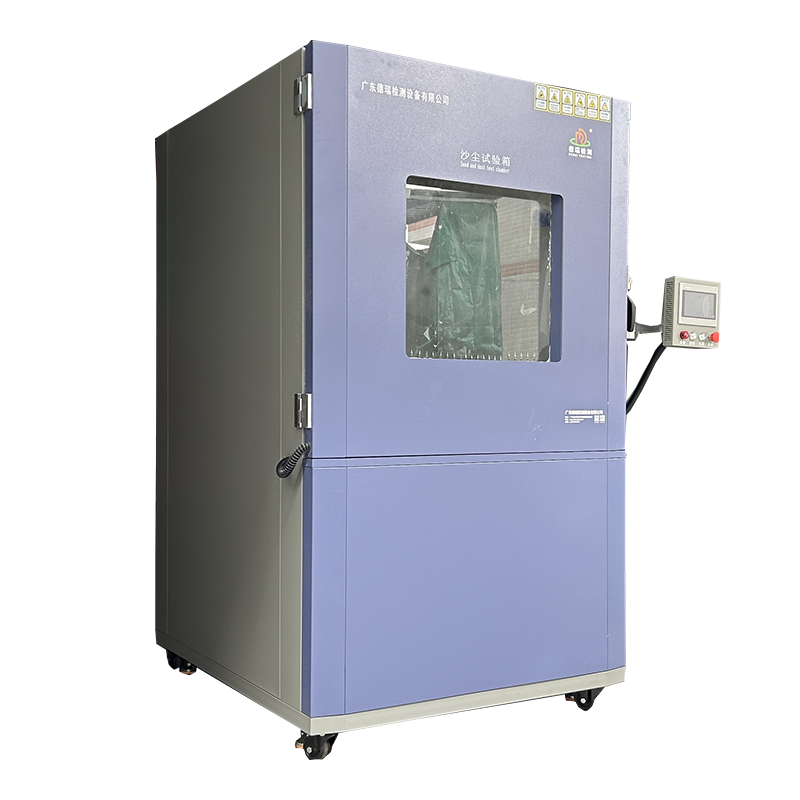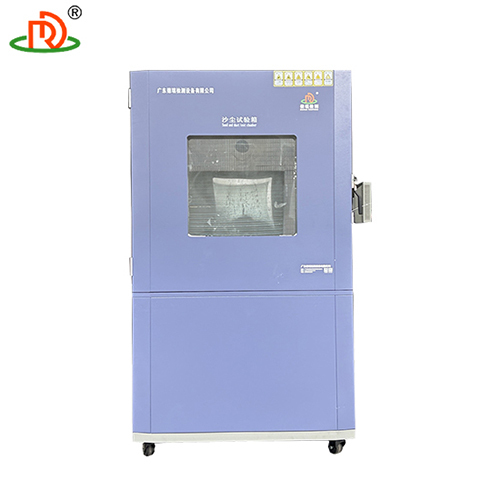
xenon arc solar radiation chamber
478005.0 INR/Unit
Product Details:
X
xenon arc solar radiation chamber Price And Quantity
- 1 Unit
- 478005.0 INR/Unit
xenon arc solar radiation chamber Trade Information
- Cash in Advance (CID)
- 110 Unit Per Month
- 7 Days
- All India
Product Description
xenon arc solar radiation chamber Standard Features
| Model | DR-H301 |
| Internal dimension (WxDxH) | 500*600*500mm |
| External dimension (WxDxH) | 1000*1000*1750mm |
| Temperature range | RT+10~ 60 (suggest to use 402) |
| Temperature Fluctuation | 1 |
| Ozone concentration | 50~1000 pphm, adjustable |
| Ozone concentration deviation | 10% |
| Sample holder | SUS#304 stainless steel |
| Temperature controller | Programmable touch screen controller |
| Ozone concentration analysis | Concentration analysis meter |
| Ozone generator | High pressure silence discharge type |
| Protection system | Leakage, short circuit, over temperature, over heat |
| Test criteria | ASTM D1149, ISO 1431, JIS K6259... |
The xenon arc solar radiation test chamber is a device used to simulate the effect of solar radiation on materials. It uses a xenon lamp light source to simulate the full spectrum of natural sunlight and evaluate the weather resistance and aging performance of materials under long-term illumination.
Functions and characteristics of xenon arc solar radiation test chamber
function
Simulate natural lighting: Use a xenon lamp light source to simulate the full spectrum of natural sunlight, including ultraviolet, visible, and infrared rays.
Temperature and humidity control: Equipped with temperature and humidity control systems, simulate different climatic conditions, and evaluate the weather resistance of materials in different environments.
Automatic cycle testing: An automatic cycle testing program can be set to simulate changes in lighting during the day and night, improving testing efficiency.
characteristic
High simulation: The spectrum of xenon lamp light source is very close to natural sunlight, which can simulate the lighting conditions in the natural environment more realistically.
Versatility: In addition to weathering test, it can also be used for light stability, color fastness, anti-aging and other tests.
Easy to operate: Equipped with an intelligent control system, it can preset test parameters, achieve automated operation, and reduce manual intervention.
Safe and reliable: equipped with multiple safety protection measures, such as over temperature protection, leakage protection, etc., to ensure the safety of operators and equipment.
application area
Xenon arc solar radiation test chambers are widely used in industries such as plastics, rubber, coatings, textiles, automobiles, building materials, and electronic appliances to evaluate the weather resistance and aging performance of materials, ensuring the quality and performance of products in long-term use.
Usage
Preparation before the experiment
1. Sample preparation: Prepare the test sample according to the testing standards to ensure that the sample size and quality meet the requirements.
2. Equipment inspection: Confirm that the equipment is in good condition and that the xenon lamp light source, temperature, and humidity control system are operating normally.
3. Environmental settings: Ensure that the temperature and humidity of the test environment meet the standard requirements, usually ranging from room temperature to 35 , with humidity not exceeding 70%.
Set experimental parameters
1. Sample placement: Fix the sample inside the test chamber to ensure its correct position.
2. Parameter setting: According to the testing standards, set parameters such as light intensity, temperature, humidity, and test time.
3. Start the device: Turn on the device and start simulating lighting and climate conditions.
Testing process
1. Real time monitoring: During the experiment, observe the status of the sample and record data.
2. Safety protection: Operators should wear protective equipment, pay attention to the ventilation of the test chamber, and prevent light source radiation and high temperature from affecting health.
end of test
1. Turn off the device: After the experiment is completed, turn off the power of the device.
2. Cleaning and maintenance: Clean the residue inside the test chamber and samples, and keep the equipment clean.
3. Data analysis: Organize and analyze test data to evaluate the weather resistance and aging performance of materials.
precautions
Sample requirements: Ensure that the sample size and quality meet the testing standard requirements.
Environmental control: The test should be conducted under specified temperature and humidity conditions to ensure the accuracy of the test results.
Safe operation: Strictly follow the operating procedures to avoid safety accidents caused by improper operation.
The xenon arc solar radiation test chamber is suitable for testing the weather resistance and aging performance of various special materials, especially those materials that are exposed to sunlight outdoors for a long time. Here are some common special materials:
1. Plastic and rubber materials
-Engineering plastics: such as ABS, PC, PVC, etc., used for the shells and components of automobiles, household appliances, and electronic products.
-Elasticity and sealing materials: such as EPDM, NBR, etc., used for door and window sealing, automotive parts, etc.
2. Coatings and paints
-Exterior wall coating: used for building exterior walls, it needs to resist ultraviolet rays and climate change.
-Automotive coatings: used for car bodies, requiring good weather resistance and gloss retention.
3. Textiles
-Outdoor clothing, such as sun protection clothing, beachwear, etc., requires a certain degree of UV resistance.
-Sunshade tarpaulin: Used for sunshades, tents, etc., it needs to withstand long-term sun and rain exposure.
4. Building materials
-Roof tiles and exterior wall materials, such as asphalt tiles, color steel tiles, etc., require good weather resistance and are not easily faded or aged.
-Windows and door frames: such as PVC windows, aluminum alloy door frames, etc., need to resist ultraviolet rays and temperature changes.
5. Electronic and electrical products
-Outdoor display screens, such as billboards, traffic lights, etc., require clear display even under strong sunlight.
-Solar panels: require long-term exposure to the outdoors and require good weather resistance and photoelectric conversion efficiency.
6. Automotive components
-Car lights and dashboard: It is required that they are not easily deformed or faded under high temperature and strong sunlight.
-Tires and wheels: They need to withstand ultraviolet radiation and road friction to maintain good performance.
7. Aerospace materials
-Aircraft shell materials, such as composite materials, aluminum alloys, etc., are required to maintain performance in high altitude environments with strong ultraviolet radiation.
-Satellite and spacecraft coatings: need to resist extreme temperature changes and solar radiation in space.
Tell us about your requirement

Price:
Quantity
Select Unit
- 50
- 100
- 200
- 250
- 500
- 1000+
Additional detail
Mobile number
Email








 English
English Spanish
Spanish French
French German
German Italian
Italian Chinese (Simplified)
Chinese (Simplified) Japanese
Japanese Korean
Korean Arabic
Arabic Portuguese
Portuguese